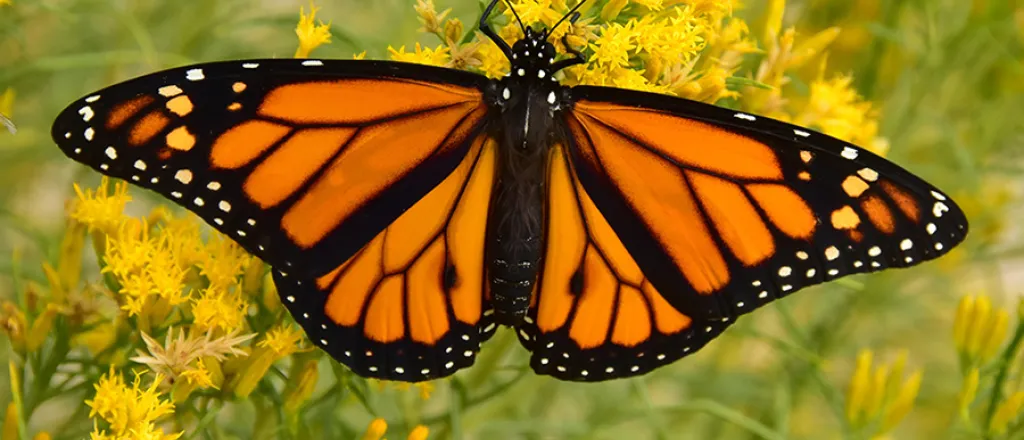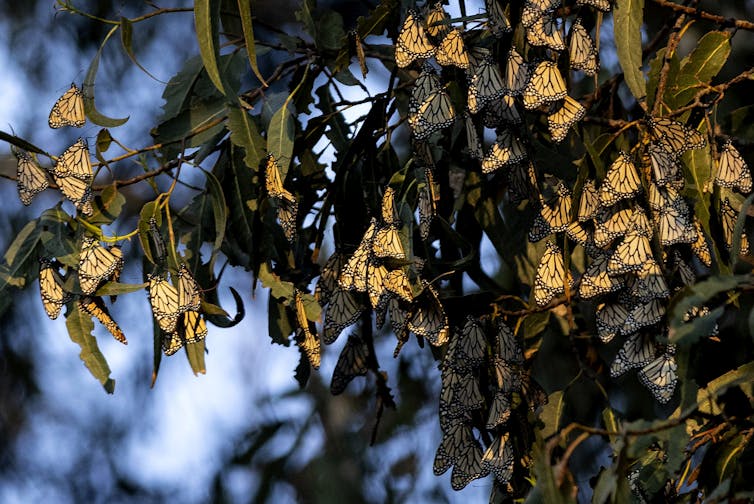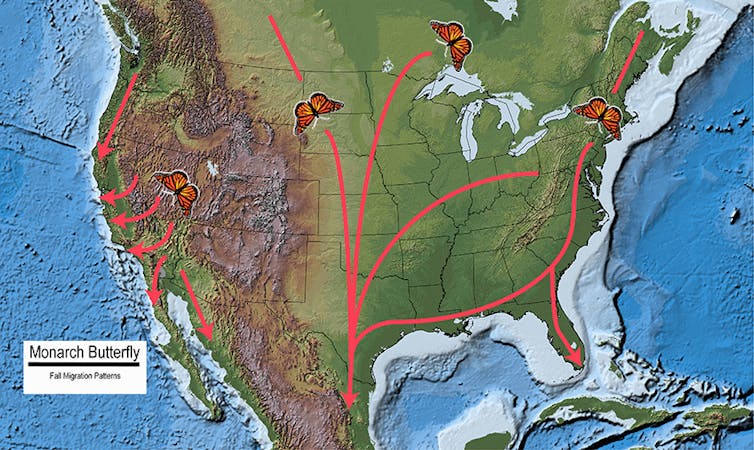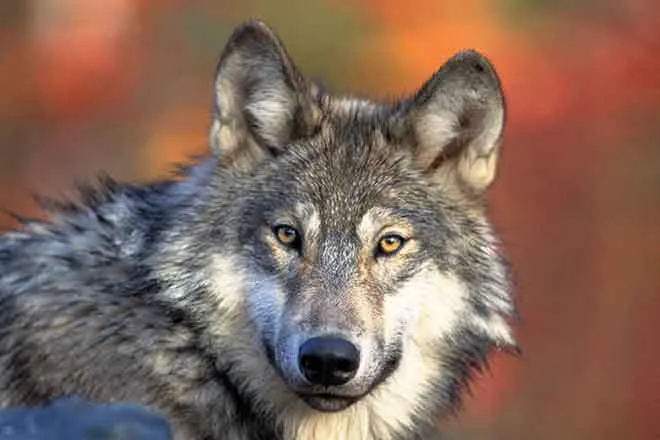
Monarch butterflies join the Red List of endangered species, thanks to habitat loss, climate change and pesticides

Kristen A. Baum, Oklahoma State University
On July 21, 2022, the International Union for the Conservation of Nature placed the migratory monarch butterfly on its Red List of threatened species and classified it as endangered. Monarchs migrate across North America each year and are one of the continent’s most widely recognized species. The Conversation asked Oklahoma State University biologist Kristen Baum, who has studied pollinators for more than 25 years, to explain the listing’s implications for the monarch butterfly in the U.S.
What is the IUCN, and what does its action mean?
The IUCN is a network of public, private and nonprofit organizations that work to conserve nature worldwide. The Red List, which was developed in 1964, provides a standardized approach for assessing the extinction risks of species. Listing the monarch butterfly draws attention to its status and to areas where more research is needed to understand factors contributing to its decline.
The IUCN listing applies to the migratory subspecies of the monarch butterfly, or Danaus plexippus plexippus. There are two migratory populations: one east and one west of the Rocky Mountains.
The eastern population migrates thousands of miles from overwintering sites in central Mexico to breeding grounds in the Upper Midwest and southern Canada. The western population migrates from overwintering sites along the Pacific Coast in California and Baja California in Mexico to breeding grounds west of the Rocky Mountains. Monarchs in other locations throughout the world, such as in Europe and many Pacific Islands, don’t migrate and are not part of the listing.

What are the main factors threatening monarchs?
There are many factors contributing to monarchs’ decline. One of the most serious threats is habitat fragmentation and loss. Habitat fragmentation occurs when urban development or agricultural expansion break up large areas of habitat into smaller, often isolated patches. This leaves fewer areas for monarchs to find the nectar-rich plants that adult butterflies feed on, or milkweed, the sole food source for monarch caterpillars.
Other threats include pesticides, disease, climate change and invasive species. Providing more suitable habitat for monarchs in more places could help them tolerate these stresses.
Monarchs are particularly susceptible to threats during the parts of their annual cycle when many millions of them cluster together. For example, a winter storm in March 2016 killed 31%-40% of the monarchs in some overwintering colonies in central Mexico. Winter storms also blow down trees, which can reduce habitat for overwintering colonies in subsequent years.
Temperature and precipitation can influence monarchs’ spring and fall migrations and breeding season success. For example, spring weather is an important factor influencing the size of the summer monarch population. Slightly warmer and drier springs produce more monarchs on the summer breeding grounds.
Are monarch butterflies protected in the US?
Not yet, although the U.S. Fish and Wildlife Service recognizes that they are at risk.
The agency received a petition in 2014 to list the monarch butterfly as threatened under the Endangered Species Act. It concluded in 2020 that listing the monarch was warranted but precluded. This means that while monarchs are at risk of extinction, they are less at risk than other species that are currently higher priorities, such as the rusty patched bumblebee.
That decision put monarchs on the candidate list, where the agency reviews their status every year. Only a subset of species on the IUCN Red List is also protected under the Endangered Species Act. For insects, that number is less than 20%.
The IUCN report estimates that the eastern monarch population has declined by 22%-72% over the past decade, and the western population has declined by 66%-91%. Evaluating trends for insect populations can be challenging because they tend to fluctuate from year to year.
Another challenge for measuring the populations of migratory species is that patterns can differ depending on when in the annual cycle they are evaluated, such as breeding versus overwintering. To estimate how many eastern monarchs overwinter in central Mexico, scientists measure how many hectares of trees are covered with monarchs and convert that number into an estimated number of butterflies.
Many factors influence how densely monarchs cluster together in trees on their overwintering grounds. Estimates based on data from the summer breeding grounds are also challenging because monarchs go through multiple generations per year and breed across a large area.
Would an ‘endangered’ listing in the US help monarchs?
Migratory monarchs have a huge range that extends from southern Canada to central Mexico and includes all of the contiguous U.S. They use many types of open habitats, from prairies to urban parks. This makes it challenging to implement and enforce regulatory actions.
The IUCN report points out that the decline of the eastern migratory population seems to have slowed, or even stabilized, over the past 10 years. The 2014 petition to list monarchs under the U.S. Endangered Species Act spurred many actions to support monarchs that likely contributed to slowing their decline, from planting milkweeds and nectar plants in home gardens to large-scale restoration projects.
Supporting these efforts could provide more benefits than a listing under the Endangered Species Act. When a species is listed, the federal government produces a recovery plan that often includes restrictions on actions that threaten the species, such as hunting or land development. Studies have found that private land owners often become less willing to participate in conservation activities, such as allowing researchers to monitor the species on their property, after a species is listed.
It’s hard to say whether listing monarchs would have this effect. People love monarch butterflies, and community science projects that involve activities like monitoring eggs and caterpillars and tagging monarchs are very popular. Data collected by citizen scientists has expanded what researchers know about monarchs. Many of these efforts have taken place over large areas and long time spans that would be hard for scientists to replicate.
I see community scientists as critical for informing monarch conservation efforts, and hope the IUCN’s action will inspire more people to get involved.![]()
Kristen A. Baum, Professor of Integrative Biology and Associate Dean for Research, Oklahoma State University
This article is republished from The Conversation under a Creative Commons license. Read the original article.

















